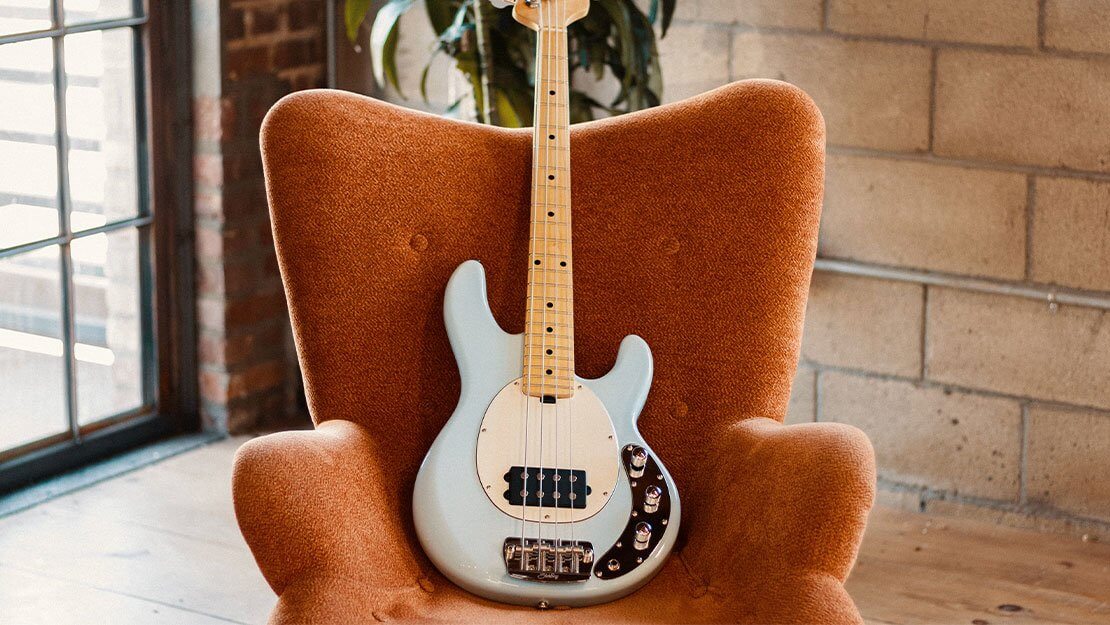Short scale basses sometimes get overlooked, even though players like Stanley Clarke and Paul McCartney have been known to favor them from time to time. Not every manufacturer has one in their line up, and if they do, they seem to be missing something. Ernie Ball took their famous StingRay Bass and literally scaled it down, while retaining the essence of what made that bass a modern classic.

With a scale length of just 30”, the neck is very comfortable to wrap your hands around. The body also seems a tad bit smaller, as well. Control wise, it looks simple, with a volume control, three-way pickup rotary knob, and a master tone. But there’s a secret; the volume control is a push/push version that engages a boost. Amazingly it is passive, so no need for batteries. The pickup is a humbucking version and the three-way rotary control allows the player to select the front coil, both coils, or the rear coil.
The pickup in the “neck” mode was plenty round and full. Cool, mellow P-bass style tones still had attack but stayed velvety smooth. Going to the bridge added in that treble for Yes-like runs. If you want that harder attack, it’s right there. When both coils were engaged, it had a perfect balance of edge and warmth. Overall that setting was our reviewer’s fave. The volume boost is quite functional — need to cut through a tough mix, but don’t want to bring an EQ or boost pedal? This is a lifesaver. The tone control was also fantastically useful, with a wide sweep, and no “drop off” when turned down.

One thing we did notice, is when we did some slap and pop bits, the signal would cut out on an aggressive attack, only to slowly return. It felt like it occurred if the string made contact with a pickup’s pole piece. Lowering the pickup and raising the bass amp’s level to compensate fixed that.
The only limitations are color and fingerboard choices. Our test version was in Daphne blue, with a maple board. It’s also available in Olympic white, with a rosewood fingerboard. So keep those limitations in mind.
Bassists, if you don’t have one of these, it’s worth checking out; the smaller scale can make doing wider interval reaches easier, and chords aren’t as difficult. Overall, it can open up options in technique and creativity you may not have been aware of.
Guitar players, get one of these. Think of all the times you’ve gone to a jam, where four guitar players and no bass player shows up. Yeah, it goes to show how important bass is, even in a casual jam situation. The neck shape and scale make transitioning from a normal guitar super easy. Also think of all the times you’ve been recording a demo without a bass handy. Now there’s no excuse not sto lay down a scratch bass track.
Ernie Ball basses were cutting edge when they came out, and over the years, the design has been refined again and again — this version of the StingRay gives players a whole new feel, with a sound that’s legendary and still contemporary. Even better is the Sterling versions are quite affordable, and still have the quality and features that Ernie Ball defined.
PROS:
Great playing, great sounding, nice design
CONS:
None
STREET PRICE:
$549
